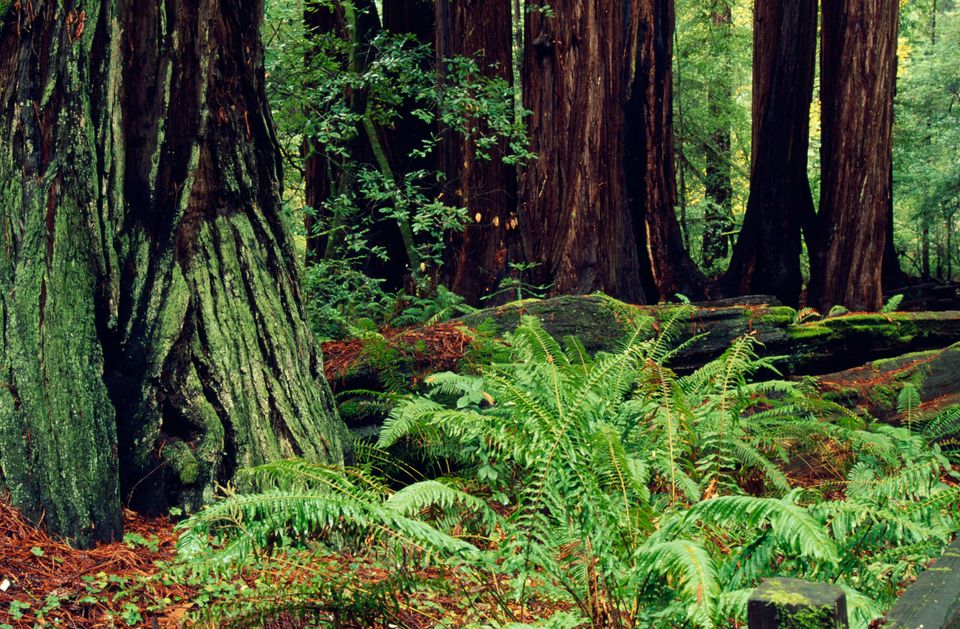
It was the odd combination of America's war machine, a band of determined land conservationists and a soon-to-be tarnished president that helped preserve lands that today are the Golden Gate National Recreation Area, which turns 40 years old Saturday.
The GGNRA stretches over 80,000 acres in Marin, San Francisco and San Mateo counties, providing open space and serenity for one of the most densely populated urban areas in the nation. The park has 14.5 million visitors annually.
(SCROLL DOWN FOR PHOTOS)
"There are almost 7 million people in the Bay Area and this is the heart and the lungs where people come to have fun, recreate but also to decompress," said Frank Dean, the park's superintendent.
Roughly 55 percent of the GGNRA'sacreage is in Marin and represented by Muir Woods, Bolinas Ridge, Fort Baker, Fort Cronkhite, Gerbode Valley, Kirby Cove, the Marin Headlands, Muir Beach the Muir Beach Overlook, Nike Missile site, Olema Valley, Point Bonita Lighthouse, Stinson Beach and Tennessee Valley.
Going back to the late 19th Century, it was the United States military that kept large swaths of the coastal Bay Area from being used for sprawling communities, Dean noted.
"The military, perhaps inadvertently, protected these lands from development as it engaged in 100 years of coastal defense," said the superintendent, as he spoke at Rodeo Beach recently. "Right at the height of the environmental movement of the 1970s the military declared this land surplus and that's when the effort came up to preserve this as a park and not have it subdivided."
But it would not happen without a fight.
With the backing of Gulf Oil, East Coast developer Thomas Frouge bought land, proposed to the county and got approval from the Board of Supervisors in 1965 for the community of "Marincello." The plan was to build high-rise apartments and homes to house 25,000 people on 2,100 acres in the Marin Headlands between Forts Cronkhite, Barry and Baker and the city of Sausalito.
"That could have been the view from San Francisco, 25,000 people housed in this cluster of a community in the Marin Headlands," said Alex Picavet, a GGNRA spokeswoman. "It was well funded and well planned."
But the project became embroiled in legal issues and after a court ruling against the plan, Marin supervisors said they would no longer support Marincello; Gulf Oil dropped its backing by 1970. Eventually the land was sold to the Nature Conservancy.
Around the same time, conservationists Amy Meyer and Dr. Edgar Wayburn, president of the Sierra Club, began to push for a national park on military lands along the west and north coasts of the city.
The groups People for a Golden Gate National Recreation Area and the San Francisco Planning and Urban Renewal Agency -- SPUR -- took up the cause and Congressman Phil Burton introduced a bill to cobble together the Marin and San Francisco lands to create one national park.
The clincher came when President Richard Nixon, looking to get votes for his re-election in November 1972, paid a visit to the proposed park site on Sept. 5, 1972 and gave the plan his endorsement. It was hardly a bold move; the bill had little opposition and the president seized the moment in an attempt to get the environmental vote.
"I pledge the pressures of this political season will in no way diminish my administration's sense of urgency in environmental action." Nixon said at the visit. "But the Congress must also fulfill its part of the partnership."
Less than two months later, on Oct. 27, 1972, he signed a bill creating the park.
"The park became a reality because of the drive of the citizens," Dean said. "Phil Burton made it happen with the legislation, but he had this whole cadre of citizens behind him saying 'let's do this.' It wasn't people at the top that made this happen."
On a quiet Tuesday last week, Bob Kirkwood oand his son, Brooks, of Kentfield, took a walk in the Gerbode Valley, which would have been covered with concrete and homes under the Marincello plan.
"To be surrounded by ridges like this is very special," said the elder Kirkwood, who was with SPUR during the fight for the park. "It's wonderful to have it preserved as is. It was a great grassroots effort."
Said Brooks: "It's hard to imagine 25,000 people here. It's hard to imagine anything but this."
The future of the park in Marin will look a lot like its present, Dean said.
"We are careful about what we do, so if we make improvements we are careful so we don't make things look too man made," he said. "We may put an overlook in or a trail. On the Marin side we tend to be more conservative. The city is a little different, it has more of an urban feel."
One thought is to move the Marin Headlands visitors center down from the hills closer to Rodeo Beach and have a warming-hut type of structure -- like at Crissy Field in San Francisco -- built for visitors to grab a cup of coffee on a cold foggy day or a cool drink on rare warm day.
"But nothing dramatic, it should be hard to build something in a park," Dean said. "People value this, they get it, they love the park. We are lucky, so fortunate to have this."
Contact Mark Prado via email at mprado@marinij.com ___
(c)2012 The Marin Independent Journal (Novato, Calif.)
Visit The Marin Independent Journal (Novato, Calif.) at www.marinij.com
Distributed by MCT Information Services
Take a look at some of our favorite places within the Golden Gate National Recreation Area below:
